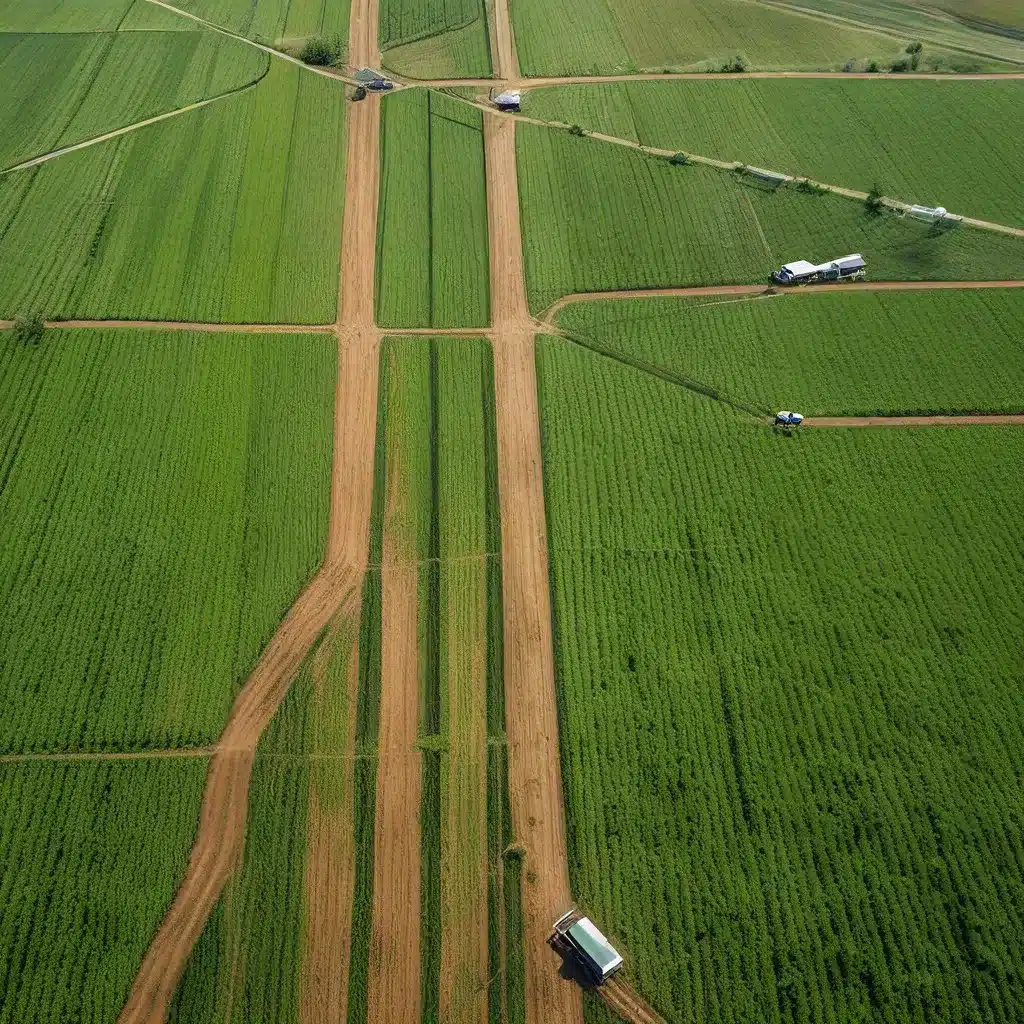
The Rise of Sensor Networks in Agriculture
Sensor networks have emerged as a transformative technology in the agricultural sector, enabling precision farming and resource management that were once unimaginable. By integrating a network of interconnected sensors, today’s smart agriculture leverages the power of data to optimize operations, boost productivity, and ensure sustainable practices.
At the heart of this revolution are IoT (Internet of Things) devices that collect real-time data on soil moisture, nutrient levels, weather conditions, and other crucial variables. This information is then fed into sophisticated algorithms, allowing farmers to make informed decisions and automate various agricultural tasks. From precisely targeting irrigation to controlling pest infestations, sensor networks are empowering a new era of data-driven farming.
Moreover, the deployment of sensor networks in agriculture extends beyond just crop management. These systems also play a vital role in livestock monitoring, enabling farmers to track the health, location, and behavior of their animals. By detecting early signs of illness or distress, sensor-equipped livestock can receive timely attention, leading to improved animal welfare and productivity.
Precision Farming: Optimizing Agricultural Inputs
One of the key benefits of sensor networks in agriculture is their ability to facilitate precision farming. By gathering real-time data on soil conditions, weather patterns, and crop growth, farmers can make data-driven decisions to optimize the use of resources, such as water, fertilizers, and pesticides.
Precision farming leverages sensor data to precisely target specific areas of a field, adjusting inputs based on the unique needs of each location. This approach not only reduces waste and minimizes environmental impact but also increases crop yields and improves profitability.
For example, soil moisture sensors can identify areas with varying levels of moisture, allowing farmers to precisely control irrigation. Similarly, nutrient sensors can detect deficiencies in specific locations, enabling targeted application of fertilizers. By addressing the unique needs of each section of a field, precision farming empowers sustainable resource management and enhanced productivity.
Sensor Network Architectures for Smart Agriculture
Sensor networks in smart agriculture can take various forms, each with its own advantages and design considerations. Wireless Sensor Networks (WSNs) are a common choice, as they allow for flexible deployment and easy scalability. These networks consist of numerous sensor nodes that communicate wirelessly, transmitting data to a central control station or cloud-based platform for analysis and decision-making.
Another popular architecture is the Low-Power Wide-Area Network (LPWAN), which leverages long-range, low-power communication protocols like LoRaWAN or Sigfox. LPWAN-based sensor networks are particularly well-suited for remote or expansive agricultural settings, as they can cover large areas with minimal power consumption and infrastructure requirements.
When selecting a suitable sensor network architecture, factors such as data transmission range, power consumption, network scalability, and cost must be carefully considered to ensure optimal performance and return on investment for agricultural operations.
Securing Sensor Networks in Smart Agriculture
As sensor networks become increasingly integral to smart agriculture, the security of these systems is of paramount importance. Farmers and agricultural organizations must address a range of potential threats, including data breaches, unauthorized access, and device tampering.
To mitigate these risks, robust security protocols and encryption techniques must be implemented throughout the sensor network infrastructure. This includes securing sensor nodes, communication channels, and data storage/processing platforms. Additionally, access control mechanisms, intrusion detection systems, and regular security audits are crucial for maintaining the integrity and confidentiality of the sensor network.
Furthermore, edge computing and fog computing architectures can play a vital role in enhancing the security of sensor networks. By processing and analyzing data closer to the source (i.e., at the edge or in the fog), these approaches can reduce the attack surface and minimize the risk of data breaches or unauthorized access to sensitive information.
Energy-Efficient Sensor Network Design
One of the key challenges in deploying sensor networks for smart agriculture is energy management. Sensor nodes, often located in remote or hard-to-access areas, must be designed to operate for extended periods while minimizing power consumption.
Innovative energy-harvesting techniques, such as solar panels or piezoelectric generators, can help power sensor nodes in an eco-friendly and self-sustaining manner. Additionally, low-power communication protocols and adaptive duty-cycling strategies can significantly extend the battery life of sensor nodes, reducing the need for frequent maintenance or battery replacements.
Moreover, edge computing and distributed processing architectures can also contribute to energy-efficient sensor network designs. By offloading computational tasks to the edge or fog, the sensor nodes themselves can operate with lower power requirements, further enhancing the sustainability and longevity of the overall system.
The Future of Sensor Networks in Smart Agriculture
As the world population continues to grow and the demand for food increases, the role of sensor networks in smart agriculture will only become more crucial. These transformative technologies are paving the way for a future where precision farming, resource optimization, and sustainable practices are the norm, not the exception.
From predictive analytics to autonomous decision-making, the possibilities offered by sensor networks in the agricultural sector are truly exciting. As the sensor networks research and development community continues to push the boundaries of innovation, we can expect to see even more remarkable advancements that will revolutionize the way we grow, harvest, and manage our precious agricultural resources.